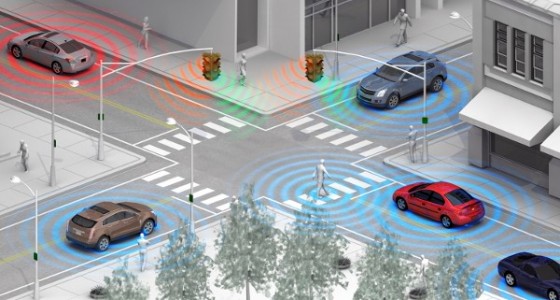Astazi facem un pas spre viitor deoarece va prezint un proiect al celor de la General Motors, celebrii producatori de masini, care considera ca vietile pietonilor pot fi salvate cu ajutorul Wi-Fi Direct, a smartphone-urilor si a unor sisteme inteligente montate in masini. Practic GM isi imagineaza ca masinile viitorului vor contine sisteme inteligente care comunicand prin Wi-Fi Direct cu smartphone-urile ar putea atentiona soferii despre existenta unor pietoni/biciclisti sau a unei coliziuni iminente. Daca sistemul ar fi automatizat, atunci masinile s-ar putea opri singure in situatii de urgenta, sau ar putea efectua manevre de evitare a pietonilor.
Intregul sistem este foarte interesant, el ar putea fi combinat si cu camere care sa arate pozitia pietonilor/biciclistilor sau chiar a altor masini, iar drept rezultat avem vieti pretioase care sunt salvate. Proiectul este deocamdata doar in faza de testare si sigur nu va fi util pentru toata lumea cand va fi oficial lansat, insa ar fi extrem de interesant sa vedem asa ceva disponibil in masini.
GM Developing Wireless Pedestrian Detection Technology
2012-07-26Wi-Fi Direct connectivity in vehicles could help increase driver awareness
Efforts build on GM’s Vehicle-to-Vehicle and Vehicle-to-Infrastructure technology
DETROIT – General Motors researchers are developing a promising driver assistance feature potentially capable of detecting pedestrians and bicyclists on congested streets or in poor visibility conditions before the driver notices them.The feature relies on Wi-Fi Direct, the peer-to-peer wireless standard that allows devices like some smartphones to communicate directly with each other rather than through a shared access point like a cell phone tower.
GM researchers have determined Wi-Fi Direct can be integrated with other sensor-based object detection and driver alert systems already available on production vehicles to help detect pedestrians and bicyclists carrying smartphones equipped with Wi-Fi Direct.
The automaker also is looking to develop a complementary app for Wi-Fi Direct-capable smartphones that can be downloaded by frequent road users such as “bike messenger” or “construction worker” that will help Wi-Fi Direct-equipped vehicles identify them.
Wireless pedestrian detection is part of GM’s ongoing development of vehicle-to-infrastructure (V2I) and vehicle-to-vehicle (V2V) communication systems that could provide advance warning about hazards such as slowed or stalled vehicles, slippery roads or intersections and stop signs.
“This new wireless capability could warn drivers about pedestrians who might be stepping into the roadway from behind a parked vehicle, or bicyclists who are riding in the car’s blind spot,” said Nady Boules, GM Global R&D director of the Electrical and Control Systems Research Lab. “Wi-Fi Direct has the potential to become an integral part of the comprehensive driver assistance systems we offer on many of our Chevrolet, Cadillac, Buick and GMC vehicles.”
By eliminating the intermediate step required to reach a cell phone tower, Wi-Fi Direct allows devices to connect in approximately one second compared to conventional wireless systems that typically need seven or eight seconds to acquire location information and connect.
“Wi-Fi Direct’s fast connections offer a distinct advantage in vehicle applications,” said Donald Grimm, GM Global R&D senior researcher of perception and vehicle control systems. “The quicker a vehicle can detect other Wi-Fi Direct users, the greater the potential for collision avoidance.”
According to the National Highway Traffic Safety Administration, 4,280 pedestrians and 618 bicyclists lost their lives in collisions with motor vehicles in 2010. Both totals were down by as much as 25 percent since 1995, consistent with overall traffic fatalities. GM’s potential use of Wi-Fi Direct is one way the automaker is working to help further reduce the number of traffic fatalities.
The Wi-Fi Alliance, the global industry association in charge of certifying wireless standards, claims Wi-Fi Direct devices can reach each other at a maximum distance of 656 feet or more than two football fields away. In addition to aiding pedestrian detection, this range could enable secure transfers of files such as MP3s or digital address book information between a home computer and the user’s Wi-Fi Direct-equipped vehicle infotainment or navigation system.
“As we move toward becoming a more connected society, having a self-aware connected car will be increasingly important,” said Thilo Koslowski, vice president of automotive industry analysis at Gartner Inc., a leading information technology research and advisory company. “Not only can Wi-Fi Direct help vehicles seamlessly communicate with other consumer devices, it can also augment vehicle-to-infrastructure communications as well, which could lead to better traffic management and fewer accidents.”

















